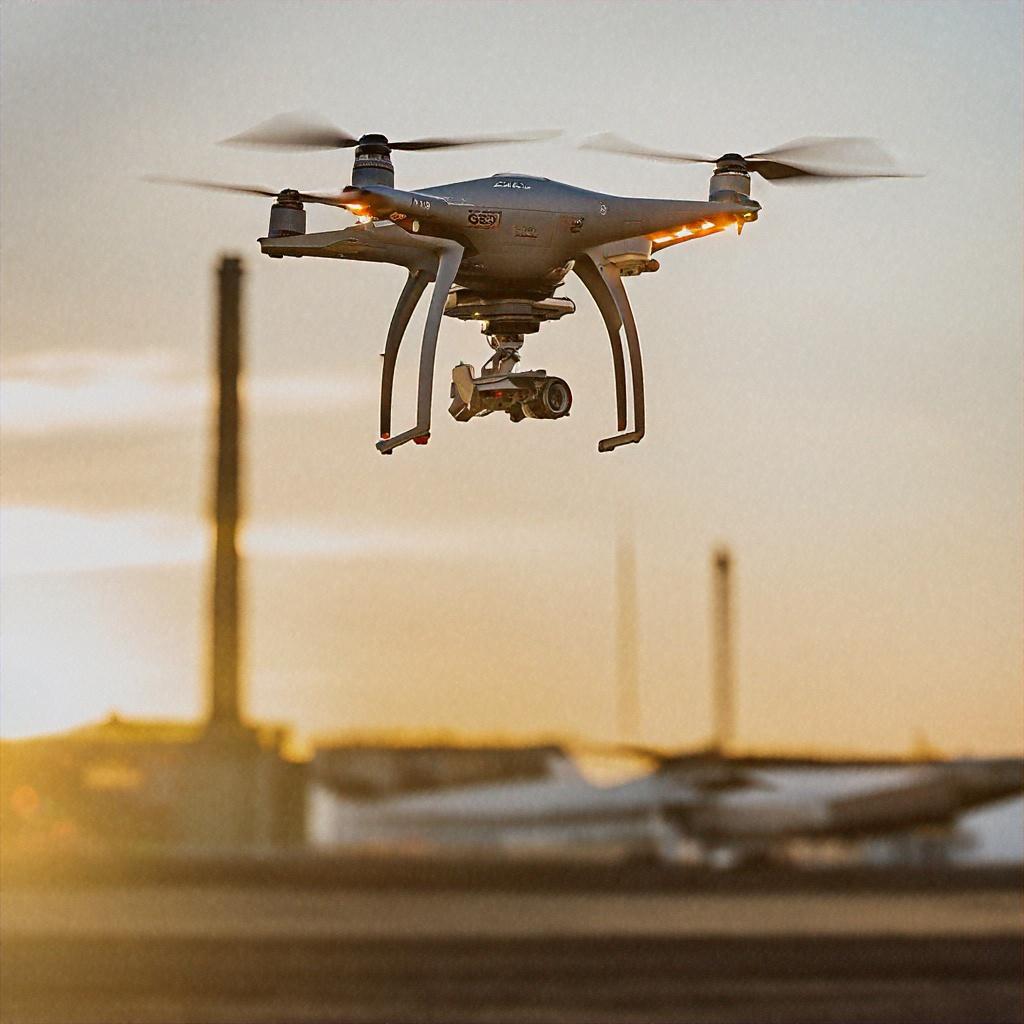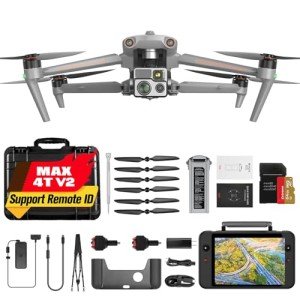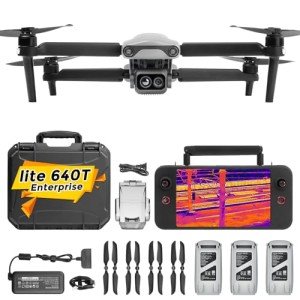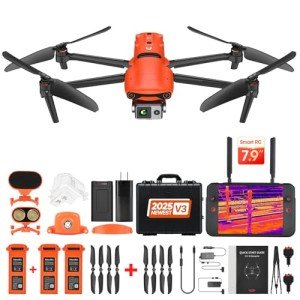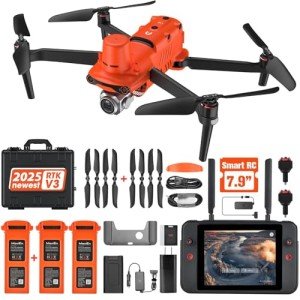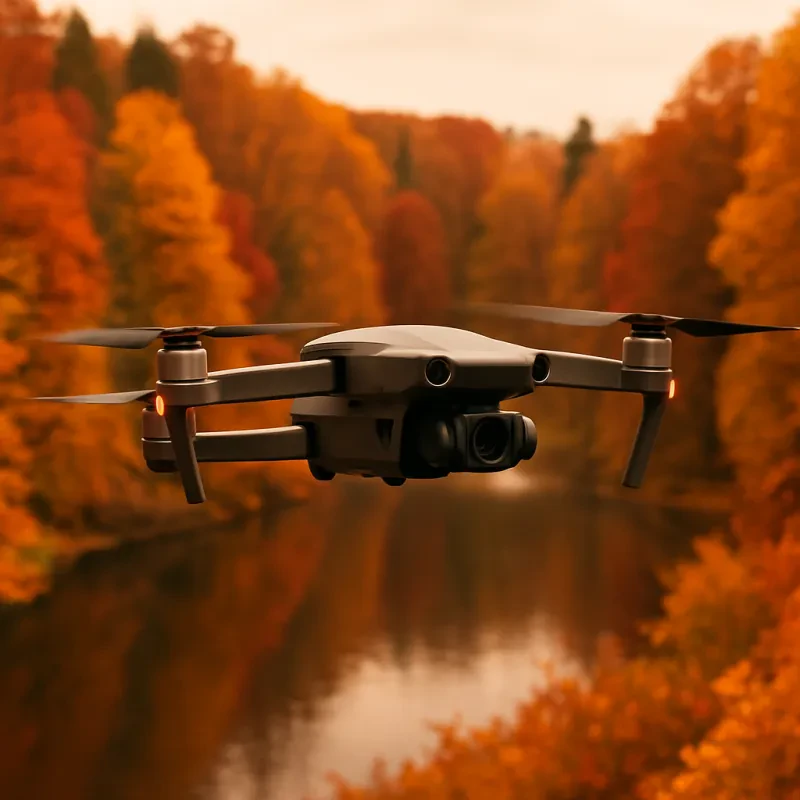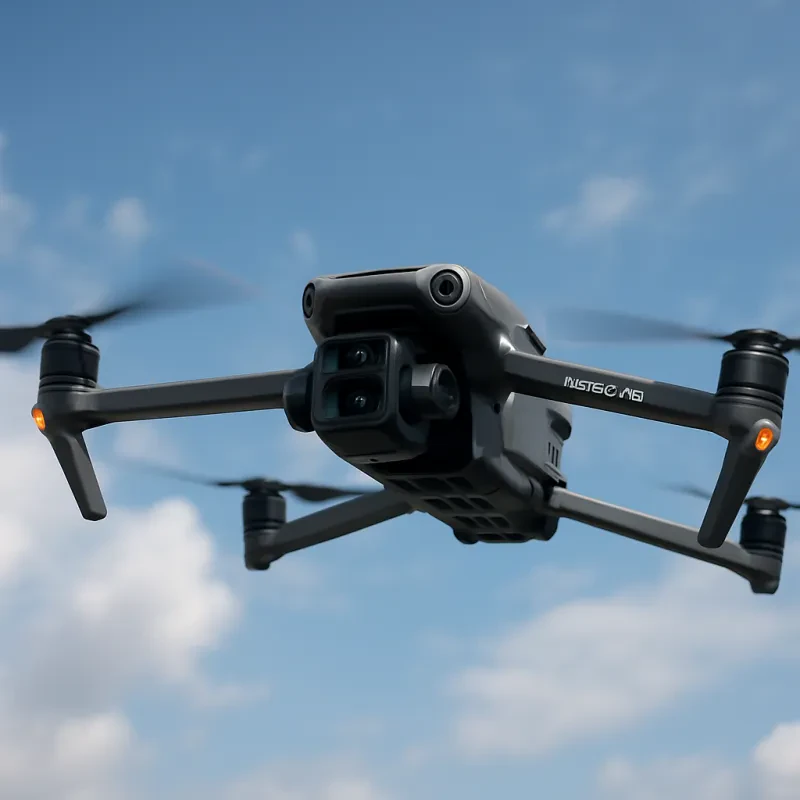Enterprise Drones vs Commercial Drones
Drones, also known as unmanned aerial vehicles (UAVs), have transformed how industries operate by introducing innovative methods for data collection, management, and delivery. Initially developed for military applications, the evolution of drone technology has led to widespread adoption across various sectors, including agriculture, construction, logistics, and media. This rise in relevance can be attributed to their ability to perform tasks more efficiently and safely when compared to traditional methods.
When we examine the world of drones, a fundamental distinction arises between enterprise drones and commercial drones. Enterprise drones are typically utilized in more complex operational settings, where advanced features such as obstacle avoidance, real-time data analysis, and extensive payload capabilities are essential. These types of drones are favored by large organizations and government entities that require precision, reliability, and scalability in their operations. Their applications may include surveying, mapping, infrastructure inspection, and even emergency response, reflecting their versatile nature and ability to address diverse industrial challenges.
On the other hand, commercial drones, while still powerful, generally cater to smaller businesses and individual users. These drones are primarily focused on specific tasks such as aerial photography, recreational use, and light package delivery. Their design and functionalities are often tailored for ease of use, allowing users to operate them with minimal training or expertise. Consequently, commercial drones play a crucial role in democratizing access to aerial technology, enabling smaller enterprises and hobbyists to leverage drone capabilities for various purposes.
As we delve deeper into the characteristics, functionalities, and applications of these two categories, it becomes evident that understanding their distinctions is vital for stakeholders looking to leverage drone technology effectively in their operations.
Key Features of Enterprise Drones
Enterprise drones are specifically designed to cater to the unique needs of businesses and industries. One of the standout features of these drones is their incorporation of advanced technology, including artificial intelligence (AI) and real-time data processing capabilities. This technological integration allows for more efficient operations and enhances decision-making processes. For instance, AI algorithms can analyze aerial imagery and sensor data, identifying patterns and trends that are critical for industries like agriculture, where drone technology is used for crop monitoring and precision farming.
Another significant characteristic of enterprise drones is their autonomous flight capabilities. These drones are equipped with sophisticated navigation systems that allow them to conduct flight missions without continuous human intervention. This feature is particularly advantageous in sectors such as construction and emergency services, where drones can perform complex tasks or reach hazardous areas without risking human life. Additionally, the ability to program flight paths contributes to operational efficiency and ensures consistent data collection across varied landscapes.
Durability is also a crucial attribute of enterprise drones. Built to withstand rigorous conditions, these drones often feature reinforced frames and weather-resistant components, making them suitable for use in challenging environments such as extreme temperatures or inclement weather. Furthermore, compliance with regulatory standards is integral for enterprise drones, ensuring that they adhere to guidelines set forth by aviation authorities. This compliance not only safeguards operational legitimacy but also instills confidence in the businesses that utilize these drones for various applications.
In essence, enterprise drones are distinguished by their advanced technology, autonomous capabilities, durability, and regulatory compliance, making them essential tools for industries like agriculture, construction, and emergency services.
Key Features of Commercial Drones
Commercial drones represent a versatile and accessible segment of the drone market, tailored for various applications primarily targeting consumer-oriented needs. These unmanned aerial vehicles (UAVs) are designed to be user-friendly, allowing individuals with little to no prior experience to operate them effectively. Their accessibility is bolstered by advancements in technology, enabling features like automated flight modes, intuitive control interfaces, and integrated cameras.
Typically, commercial drones are categorized into several types based on their applications. For instance, they are widely used for aerial photography and videography, providing hobbyists and professionals alike with high-quality imaging capabilities. Additionally, commercial drones find applications in surveying and mapping, offering efficient solutions for data collection in fields such as agriculture, construction, and environmental monitoring. Furthermore, recreational use of drones has surged, becoming a popular hobby among enthusiasts who relish the experience of flying drones and capturing breathtaking views from the skies.
When considering the market range of commercial drones, potential buyers will find models available at various price points, making them accessible to a broad audience. Entry-level drones can be purchased for a few hundred dollars, while more sophisticated models equipped with advanced features may cost several thousand dollars. The pricing model often correlates with the drone’s specifications, including camera quality, flight time, and additional functionalities like obstacle avoidance and live streaming capabilities.
Brand reputation plays a pivotal role in the commercial drone marketplace. Established brands tend to have a loyal customer base, primarily attributed to their commitment to quality and reliable customer support. Therefore, it is advisable for consumers to select drones from reputable manufacturers, as this significantly influences the user's overall experience, safety, and satisfaction in their drone operations.
Comparative Analysis: Enterprise vs Commercial Drones
When comparing enterprise drones and commercial drones, several critical factors emerge, including cost, scalability, target market, versatility, and performance. These distinctions are essential for individuals and organizations in determining the most appropriate drone for their specific needs.
Cost is often a significant differentiator. Enterprise drones, designed primarily for specialized industrial applications, typically come with a higher price tag. These drones are equipped with advanced sensors and cameras capable of producing high-resolution imagery and data analytics, which justifies their investment for businesses that require precise measurements and extensive data collection. Conversely, commercial drones, often marketed towards hobbyists or professionals seeking more general functionalities, tend to be more affordable, providing an accessible entry point for casual users or small businesses.
Scalability is another important aspect. Enterprise drones are engineered to perform at scale, suitable for large-scale operations such as agricultural monitoring, infrastructure inspections, or aerial surveying. Their sophisticated features allow companies to deploy multiple drones seamlessly, optimizing business processes. On the other hand, commercial drones may have limitations in scalability, designed primarily for individual use or smaller tasks, such as photography or recreational flying. This affects their usability in larger commercial operations.
The target market for enterprise drones primarily includes large corporations and organizations that require high-performance capabilities tailored to specific sectors, such as agriculture, construction, and logistics. In contrast, commercial drones appeal to a broader audience, from hobbyists to small business owners, looking for easy-to-use flying devices suitable for a variety of tasks.
In terms of versatility, enterprise drones typically support a range of payloads and can be customized to meet particular business needs, making them more adaptable to diverse applications. In contrast, commercial drones provide basic features and usability, focusing on simplicity for the average consumer.
Performance-wise, enterprise drones usually outperform commercial ones, offering better battery life, advanced flight control systems, and enhanced durability. These features are vital for prolonged operations in challenging environments, providing reliability that commercial drones may lack.
In conclusion, the decision between enterprise and commercial drones hinges on the specific requirements of the user or organization. For those engaged in specialized fields seeking extensive data collection, enterprise drones are preferable. For casual users or small-scale projects, commercial drones offer accessibility and ease of use, making them a suitable choice.
